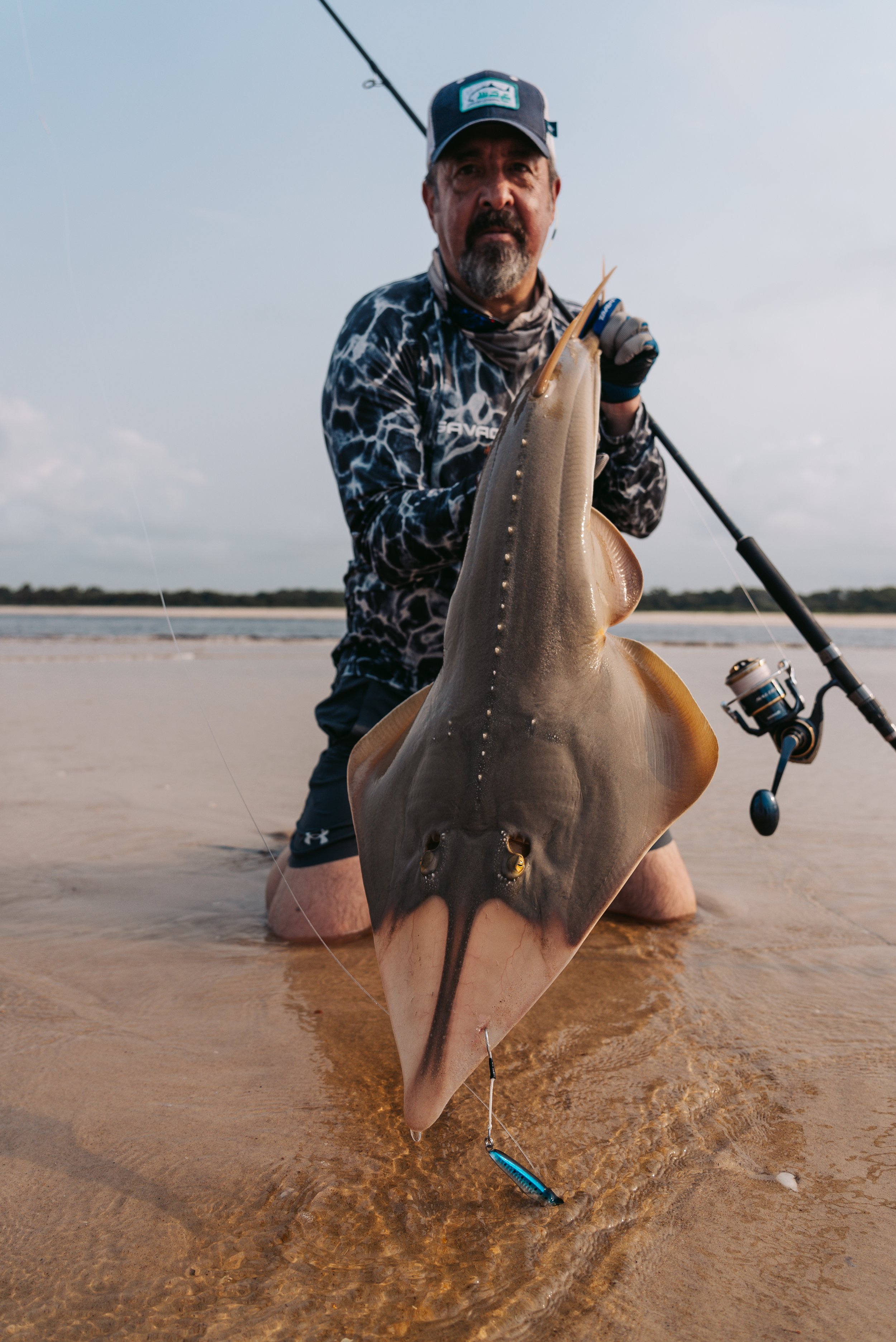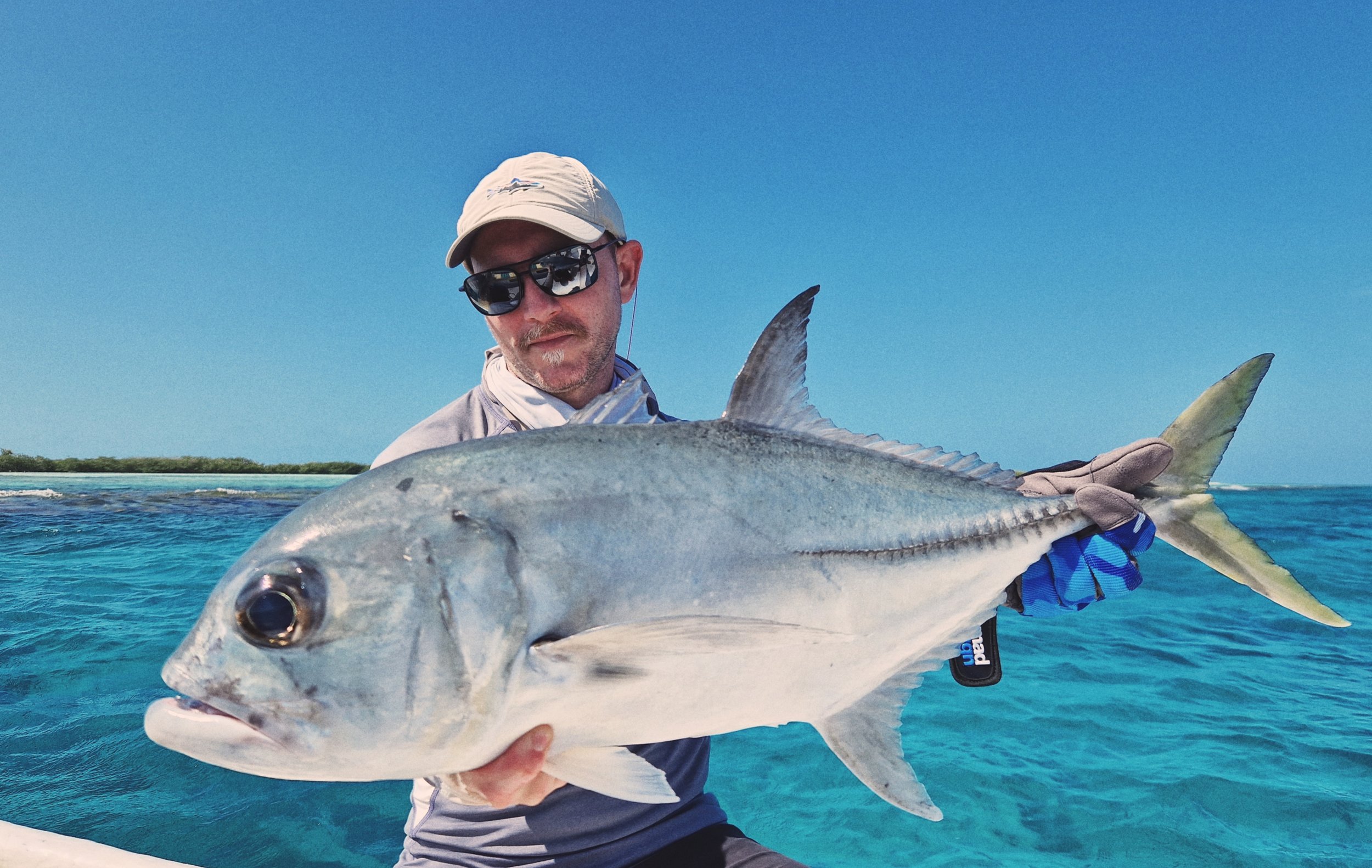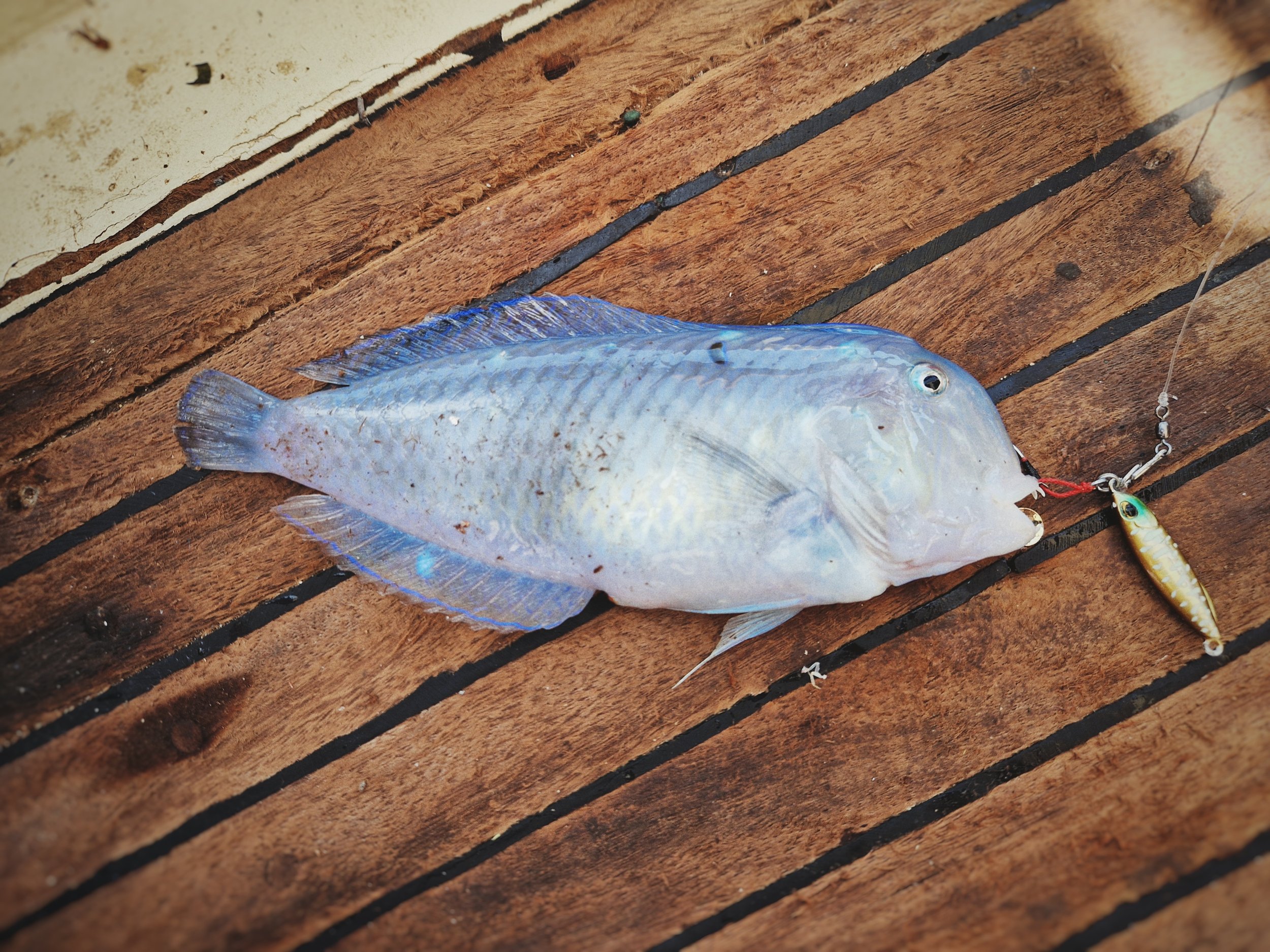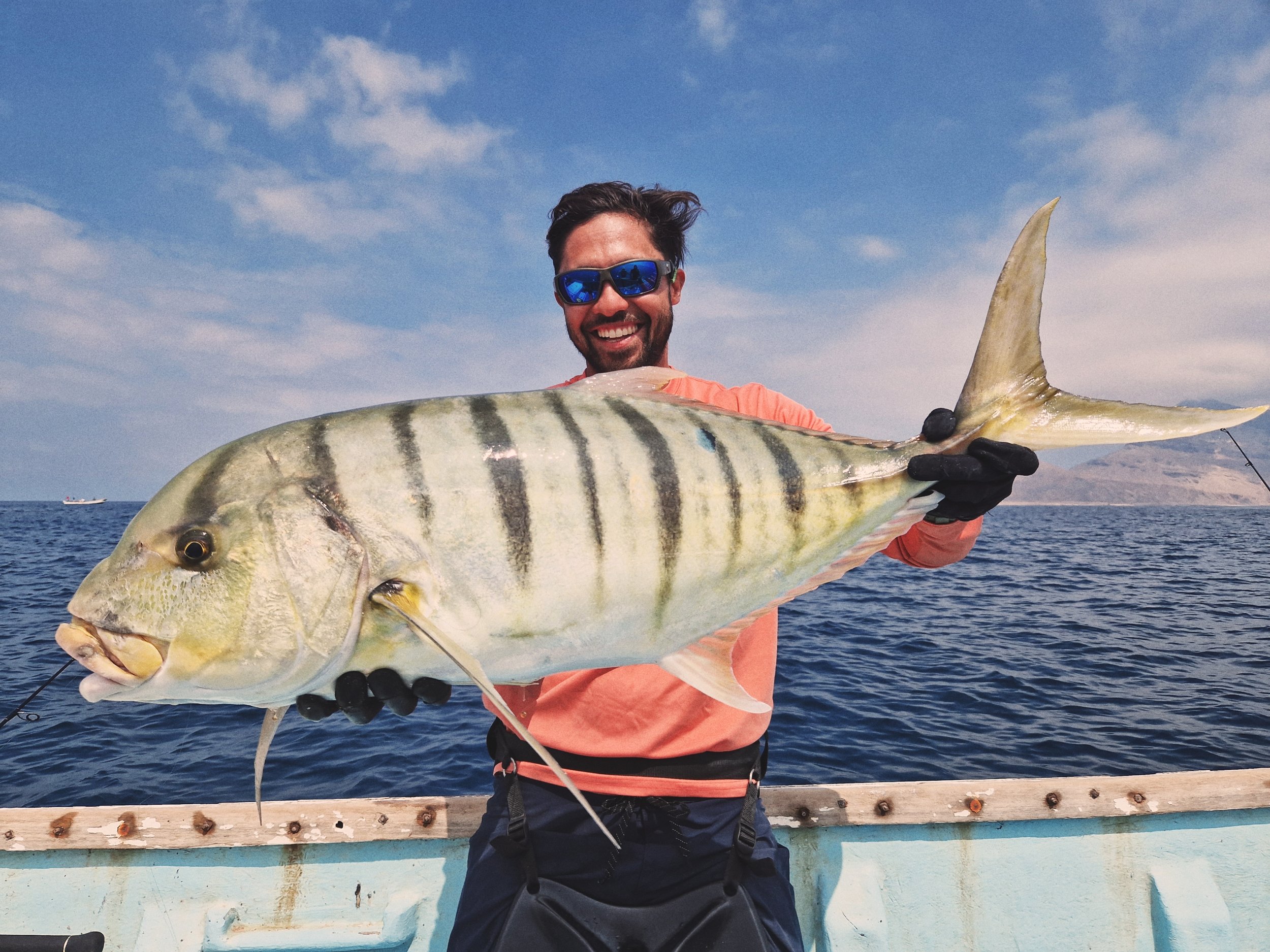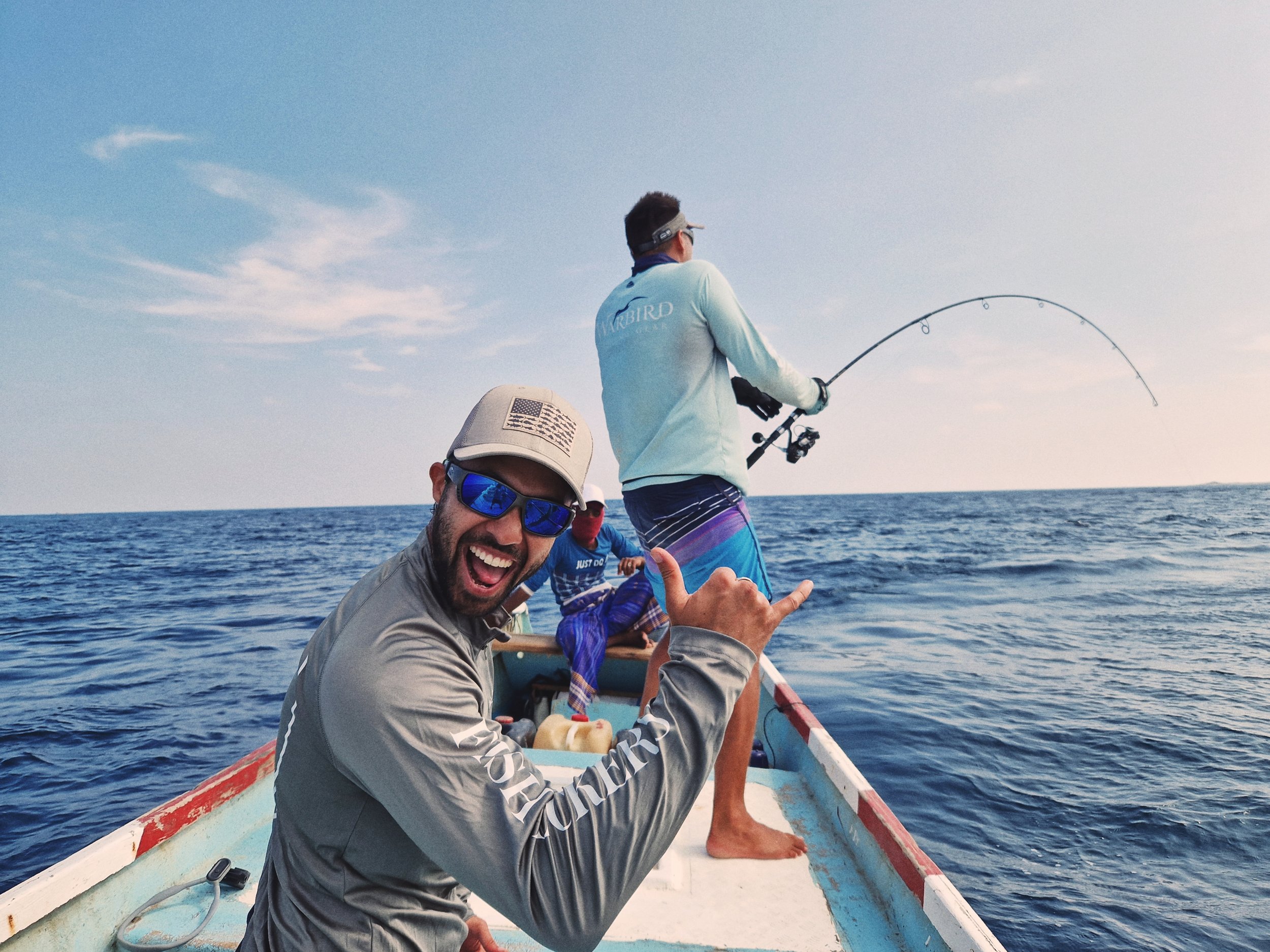Tropical Light Fishing
Tropical fishing trips are never cheap, so it's clear why most people focus all their time on catching the most popular big trophy fish in the fishery they've chosen to visit. Many anglers have this goal in mind, sometimes to the point of going to extremes and not even appreciating the other big predators that can be found in the area. For me, I've always wanted to catch a big fish, but a bigger part of me has always wanted to catch all the fish and explore the place as thoroughly as possible. That said, tropical trips targeting big predators can be very hard on the body, especially if you're casting PE10 to PE12 gear and popping like a madman all day. After a few days, it’s perfectly fine to sacrifice a day and do something else to recover, like LIGHT SPIN FISHING.
This has become an obsession of mine for a simple reason: because sometimes you feel so helpless, and it’s beautiful! It presents a challenge that’s hard to match. You’ll surprise yourself with what you can pull in with a tiny rod and reel. After doing this back-to-back for a few years, there are some fish between 5 to 20kg that you’ll remember forever. You’ll catch a great variety of species and have a lot of fun. Every time I’m on my season guiding, I have my little rod rigged for some fast, light action. Most of the clients grab it, try it out, and in the end, many decide that an ultralight rod will be their next investment for their next trip.
NIce size Maori sea perch caught on Molix Fioretto Travel Series MFE-ST-694ML - 3,5-10 g (1/8-3/8 oz)
Go light, light!
I first started with a rod that had a 20g casting action. Then I decided to go even lighter, and now I commonly use a 0.5 to 7g rod. But even a 50g rod is considered very light in these places, so it depends on how hard you want to push it. There are so many good brands of rods, both two-piece and single-piece. In my home country of Croatia, I do 90% of my fishing with a Megabass Destroyer - Kirisame ultralight spinning rod, paired with a Shimano Vanquish 2500. It’s a fast, one-piece, super light rod, perfect for carp or barbel in my fast hometown river. As for “normal” rods, the choice is up to you, as many good brands offer models with excellent action.
You can choose whatever best fits your fishing style. But I like travel rods, and since I travel with lots of filming gear, adding a rod tube on top is usually too much. As Nicola and I now travel to different places, I’ve decided to take risks with travel rods, which are known to be less favored because of their action. With 3 to 4 elements, they tend to break more easily. I’ve gone through a few brands and found only a few I believe are trustworthy. One of them is the MOLIX Fioretto Travel series, and before you dismiss it because it’s not Japanese, my Molix light rod has taken tons of serious beatings, and I still use it after three seasons of fishing. Then there’s the Japanese travel brand TRANSCENDENCE, a premium travel rod brand of the highest quality. There are a few more in Japan and around the world, but I have experience with these, and I highly recommend them. In any case, what I recommend in this story is a light rod with a strong backbone—you’ll need all the extra power you can get. And remember: don’t high-stick your rod!
For reels, I use Shimano Twin Power in 3000, 4000, 5000 and 6000 sizes.
I don’t buy Stella for lighter fishing, but I do choose reels that are real saltwater models, as they are more rigid and durable. For example, I would never use the Vanquish for tropical saltwater fishing. It’s not that you can’t do it—here in this photo below, you can see Malcolm with a 23kg yellowfin tuna landed on a 20g rod and 4000 Shimano Vanquish reel on Socotra.
Fighting with a fish of this caliber on a light gear is very intense, and its something you remember forever.
But longevity in tropical light fishing is achieved with more durable reels. I didn’t mention Daiwa, but if you use Daiwa, of course, that’s your choice, I use Shimano. Just be mindful that you need a higher-quality reel for these trips. Sand and saltwater are unforgiving for any "sealed" reel. You need something that will endure all the punishment and something you won’t throw away after the trip.
I use lines from 20 to 50lb, sometimes stronger if I’m fishing in heavy rocks from the shore. In such cases, I’ll use a stronger leader to withstand the possible damage, but I also don’t want to loose action on the small lures, which can be affected by a thick leader. In places like Gabon, light fishing is perfect because you have a sandy bottom with few possibilities for the fish to break you off. For me personally, Gabon with its variety of species is one of the best places I’ve been for light fishing.
Around the mangroves in Gabon, it’s a different story. There are oysters on the mangrove roots, and if a fish like a cubera takes your lure, they’ll tend to escape back inside, cutting you off quickly on those shells. The mouths of these fishing is clean, and you can land big fish on light tackle.
Probably the best example of that is this gigantic threadfin caught by our friend and client Richard on a light PE2 rod and 4000 Shimano reel. This fish was over 45kg, and when I saw it come onto the sandbank, I was completely shocked.
Going to the Caribbean Venezuela’s Los Roques, you find a typical reef environment where any big fish on a light setup is a big reward. Especially mutton snapper, a super cool fish that fights like all snappers - dirty. But there are also horse-eye jack, tarpon in all sizes and shapes, cubera, bonefish, snook, and many other species. Caribeans are in general a great place to fish, but when you add a place like Los Roques that has small pressure of fishing and it’s protected… the fun is guaranteed.
Talking about lures, there are so many, but you need to choose the right one. Next-level stuff includes micro tungsten jigs that will reap everything on the bottom. If you find those with a rigged spinner, they’re incredibly deadly.
Very badly molested DUO Tungsten jig with a spinner. Tungsten is denser and heavier than lead. That allows you to reach deeper water and have better action with very small lures. A small spinner is an extra boost in vibration and flash that fish just can’t resist. Luckily for me, our partner store - Maguro PRO SHOP has all the supply that I need before the trip ;)
Cleaver Wrasse is cleaver but not enough to resist a small tungsten DUO jig.
The rule is simple: big lure catches big fish, small lure catches all fish, and that’s the exact experience you’ll have with this fishing style. On top of that, you’ll catch different species like goatfish, triggers, bonefish, and everything else that sometimes eats small fish.
If you’re fishing from the shore, consider how far some lures will fly. Winds often bombard these places, and although you can cast small jigs far, a small twitch minnow might be much better for some species, especially from the shore.
In general, fish are much more cautious when hunting in shallow water. It’s rare to see the feeding frenzies that are happening in open waters with strong currents.
Even when you see a big 30kg plus GT, it’s not surprising if they refuse a big lure in shallow water. But casting small lures gives you the chance to trick the fish. Although you might want to skip that 30-plus GT on light tackle, you still want to have a lure that attracts it. Heavy trout minnows are great for very light gear; many brands produce natural colors with blue or black backs and silver or white bodies. Flashy minnows work better for trevally, which is why I commonly use a silver body. You can use minnows with a magnet system in the body for casting distances, from 8 to 12cm. It’s better if you don’t need to use expensive lures because you will lose a lot, but I’m not the best example of that. I started with budget stuff, and now I’m addicted, with some lures that will give me a serious headache if I lose them.
Lures like DUO Press Bait or BayRuff models, Yo-Zuri with his sister company DUEL, Halco, Nomad Design, etc, cast far, have great swimming action and are great for light shore and boat adventures. It is worth mentioning also Tackle House, some models like Feed Popper are well known for a reason, but there are many other plus jigs, than one of the most popular brands now in Japan - BLUE BLUE, Megabass etc,
Nomad Design Squidtrex is one of those lures that if you can put him near the bottom, you will catch fish. This lipless cranck type lure that has a squid look is a magnet for groupers and emperors.
These mainstream brands are popular worldwide, with acceptable prices and a wide model range that will cover many situations. You might want to go for more exclusive ones, but I would recommend that only after you gain some experience and a good feel for it.
Topwater lures, like spook style or even a baby spook, along with many other models from various brands that you can present in a walk-the-dog action, will hook just about anything anywhere. Again, not all lures of this type fly far enough for light tackle, so try to find ones with good weight on the back. Some can sink, but as you give them life, they pop on the surface and do their thing. Buy loud ones with a strong rattle, but also get some silent ones with no rattle for different presentations. Sinking walk-the-dog lures are also good, as they work well in the waves, which are always present on the open ocean or the shores. These lures don’t lose action by flipping on the surface; they just go through the water and pop back out, making them a great all-around choice for this type of fishing.
Needlefish imitations are always a productive lure, and Jack Fin Stylo is probably one of the best ones you can buy.
When it comes to terminal tackle and hooks, I use BKK. Yes, BKK is our partner, but as guides, we can’t recommend something we don’t absolutely believe in. So, use whatever hooks you prefer, but BKK has great strong models like Viper 41 hooks that fit even the smallest of minnows. For sizes 10 to 12 cm, I also love the BKK Raptor-Z. Viper41 is probably my favorite for small small lures.
I also like using heavy sinking lures like DUO Press Bait, with light jigging hooks from BKK that I put on the nose of the lure. A small piece of flashy paper on the hooks adds extra appeal for fish that may not be too hungry but still strike out of reaction, and the hook rate is excellent.
I don't usually like to use snaps—I prefer to tie a Rapala knot—but lately, I've started using the BKK Fast Snap-41 from time to time. It has proven to be a strong and reliable solution in situations where you need to change lures quickly.
Here are some cool catches on a very light tackle :)
Randy's expression on the face says it all...on a 70gr jig and PE3 rod he got this trophy Red Snapper, fish that is one of the dirtiest fighters in the sea.
Beautiful Golden trevally from Socotra for our boy Martin on a light tackle.
On that same trip, a few days later Martin’s brother Malcolm hooked a good GT on a light tackle. They both enjoy light fishing a lot, and in this situation first, they both fished heavy tackle for most of the morning until Malcolm decided to make a few light tackle casts with a small popper and that was our GT. This is also a good example of how more options in fishing between heavy and light tackle can make a more productive day.
We covered here Atlantic, Indian Ocean, and Red Sea. If you want to experience playful, action-packed fishing, explore the land and sea, and discover unexpected things, bring your lighter rods on your next tropical fishing trip. You will never regret gaining a deeper insight into the marvelous places you visit. After all, life is an exploration.
Text and photos by Robert Pljuscec












